Higher education institutions are investing in sustainability initiatives, but their specific goals and challenges remain unclear to many. Student and campus community engagement continues to be a key force in advancing these efforts.

EDUCAUSE is helping institutional leaders, IT professionals, and other staff address their pressing challenges by sharing existing data and gathering new data from the higher education community. This report is based on an EDUCAUSE QuickPoll. QuickPolls enable us to rapidly gather, analyze, and share input from our community about specific emerging topics.Footnote1
The Challenge
Recent EDUCAUSE reports have underscored an increased focus on sustainability and growing pressure for higher education institutions to adopt and advance green practices. For instance, the 2024 EDUCAUSE Horizon Report: Teaching and Learning Edition found that institutions are "increasing their commitment to sustainability" and leveraging AI "to address climate change and sustainability issues." According to the 2024 EDUCAUSE Horizon Report: Cybersecurity and Privacy Edition, institutions are facing increased pressure, especially from students, to adopt sustainable practices. Given this dynamic, we wanted to understand whether charges to advance sustainability had led to the establishment of specific goals and initiatives, as well as how members prioritize sustainability in their professional roles. This QuickPoll explores perspectives on institutional sustainability practices and challenges, with a particular focus on technology investments and strategy.
The Bottom Line
Sustainability is a persistent concern for higher education institutions seeking to reduce their environmental impact and incur strategic benefits such as reduced costs and operational efficiency. Advocacy from stakeholders—students, the campus community, leadership, and faculty/staff—is the most significant driver of sustainability efforts, and yet respondents varied considerably in their personal commitments to sustainability and their satisfaction with institutional efforts, with many reporting that they weren't even aware of their institution's sustainability goals, practices, and challenges. Although sustainability plays a modest role in influencing technology solution purchasing decisions, only 1% of respondents said it was a key factor that directly influences such decisions. As institutions continue to invest in technology solutions that advance sustainability goals, communication will be critical to align priorities and ensure long-term success of practices as they develop.
The Data: Sustainability Appears to Be a Developing Priority
Individuals vary widely in both their prioritization of sustainability and their satisfaction with institutional efforts to address it. Although previous EDUCAUSE reports have found that institutions are facing increasing pressure—often driven by students—to prioritize sustainable practices, the data from this survey indicate that those priorities are felt unevenly by institutional leaders, faculty, and staff. When asked how much of a priority sustainability was in their professional role, 15% of respondents said it was a high priority and 33% said it was a moderate priority (see figure 1).Footnote2 However, 26% were neutral, and 16% said it was not a priority to them, indicating a wide range of views on sustainability's significance and differing perspectives on its relevance to professional roles. This perceived significance may continue to evolve as institutions face shifting institutional needs and priorities.
Respondents also varied in their satisfaction with their institution's current sustainability practices: The majority (54%) were very satisfied or satisfied, while 25% were neutral and 15% were somewhat or very dissatisfied. With just slightly more than half of respondents expressing satisfaction with their institution's sustainability practices, institutions might need to increase buy-in across the campus community and strive for greater alignment between institutional and individual sustainability goals.
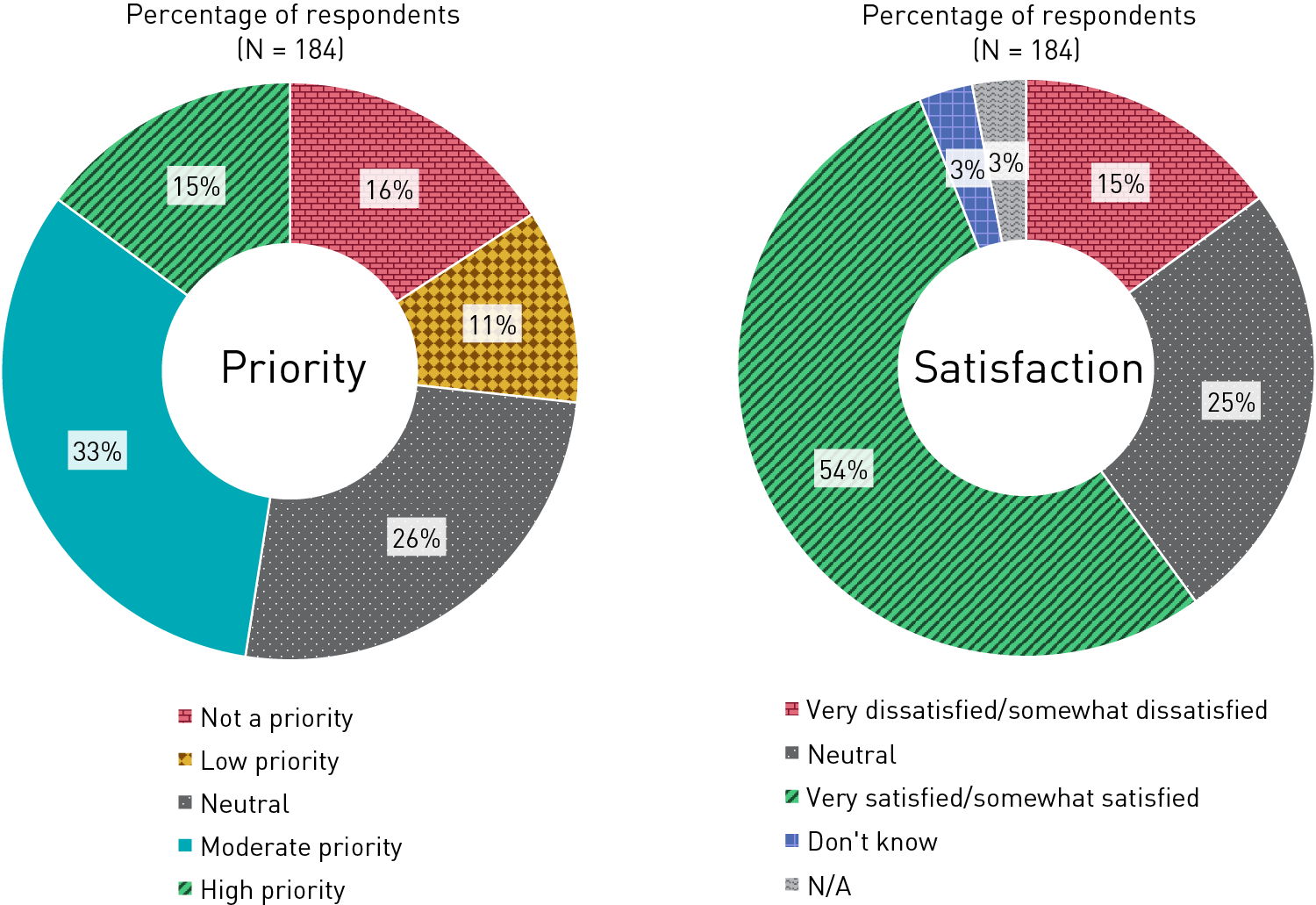
A quarter of respondents lack awareness about institutional sustainability goals. Institutions may also want to prioritize increasing awareness about institutional commitments to sustainability. When asked whether their institution had specific and established sustainability goals, 25% did not know (54% said yes and 21% said no). Meanwhile, a significant proportion of respondents (25%) did not know whether their institution was taking action on sustainability, suggesting a need for enhanced communication around specific goals. Overall, these findings imply that although institutions might acknowledge the value and importance of sustainability, translating this into specific goals and communicating them to all institutional stakeholders remains a work in progress.
Primary drivers of institutional commitment to sustainability include student and campus community demand and strategic benefits. When asked about the factors driving institutional commitments to sustainability, respondents identified a few key influences. Topping the list, 42% of respondents noted that student and campus community demand and engagement played a significant role (see figure 2). This trend of stakeholders driving institutional commitment to sustainability continued across several other areas, with 39% of respondents pointing to leadership and administration commitment, 24% faculty demand and engagement, and 20% community or stakeholder engagement as other important drivers. Surprisingly, environmental and social responsibility goals were identified as key drivers of sustainability efforts by only 36% of respondents. Other important drivers that emerged were centered on strategic institutional benefits, with 36% of respondents saying that financial benefits, such as cost savings and operational efficiency, drive sustainability efforts. Reputation and public perception enhancement (31%) and long-term institutional strategy (30%) were also key drivers that contributed to institutional sustainability commitments.
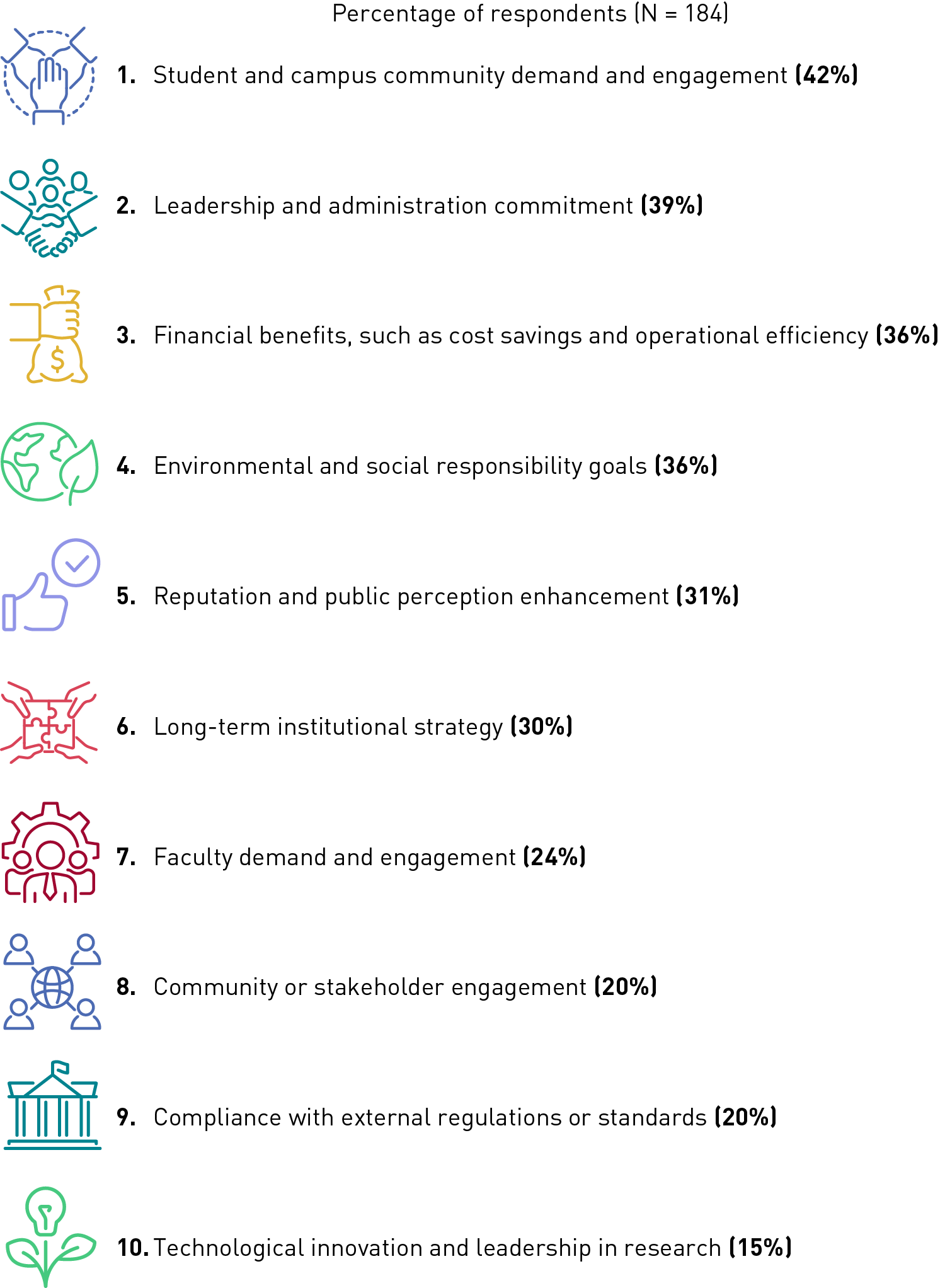
The Data: Sustainability and Technology
Sustainability is considered in technology solution purchasing decisions but is not a primary factor. Sustainability appears to have a moderate influence on purchasing decisions, with 29% of respondents noting that it is considered but weighed equally alongside other factors, such as cost and functionality, and 31% saying it is considered occasionally but is rarely a determining factor (see figure 3). Only 1% of respondents said that sustainability was a key factor that directly influences technology solution purchasing decisions at their institution. On the other hand, 14% of respondents said that it was not considered in purchasing decisions at all, and 25% said they did not know.
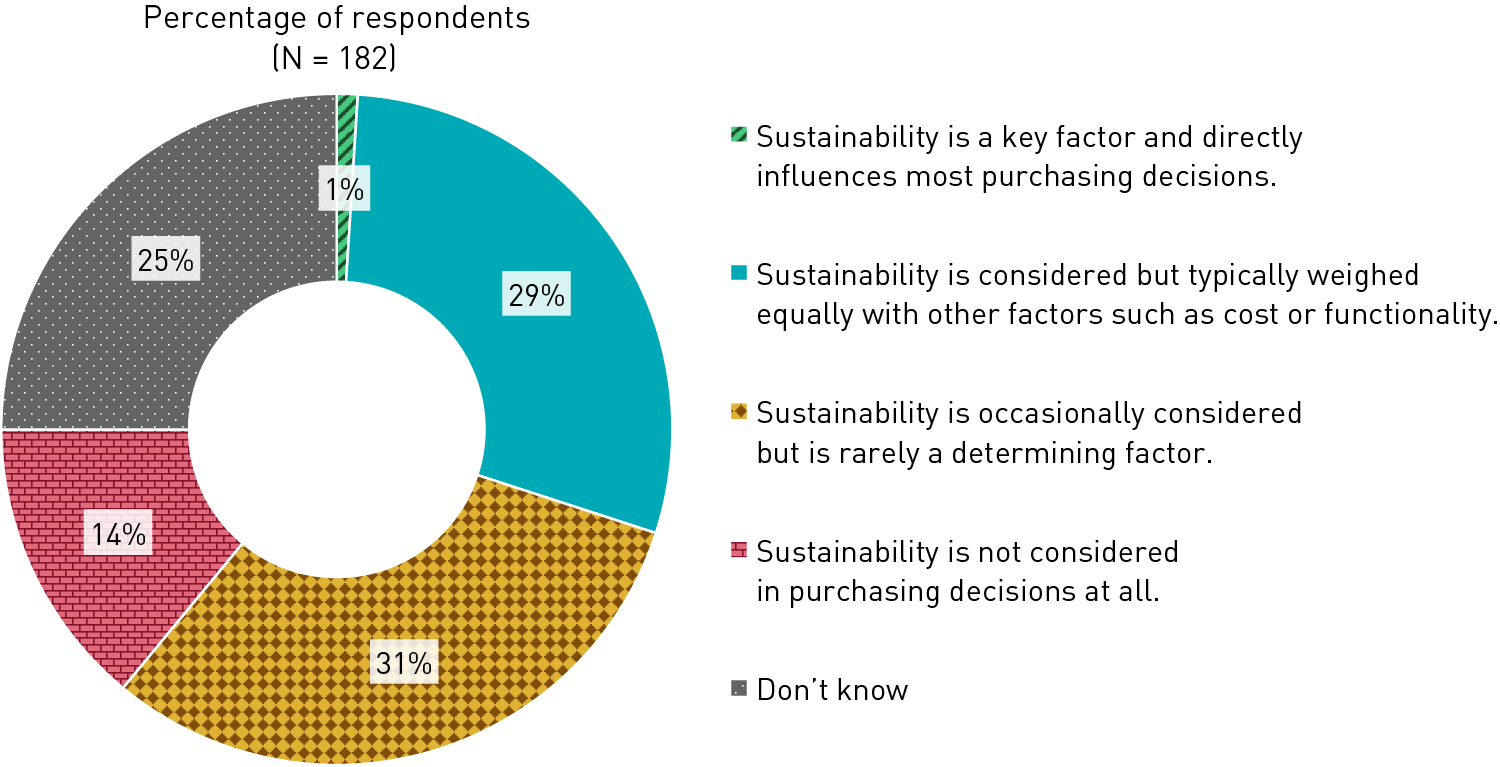
Current technology investments to support sustainability prioritize sustainable operations. Institutional investments in technology to advance sustainability practices can enable institutions to improve resource efficiency and optimize energy use while reducing environmental impact. Respondents identified several key institutional investments in technology that are facilitating sustainability efforts—in particular, green IT (45% of respondents), energy-efficient technologies (41%), investments in technology for reducing staff travel (39%), and smart energy-management systems (38%) emerged as important investments (see figure 4). Interestingly, all of these prioritize sustainable operations and enhancing long-term operational efficiency.
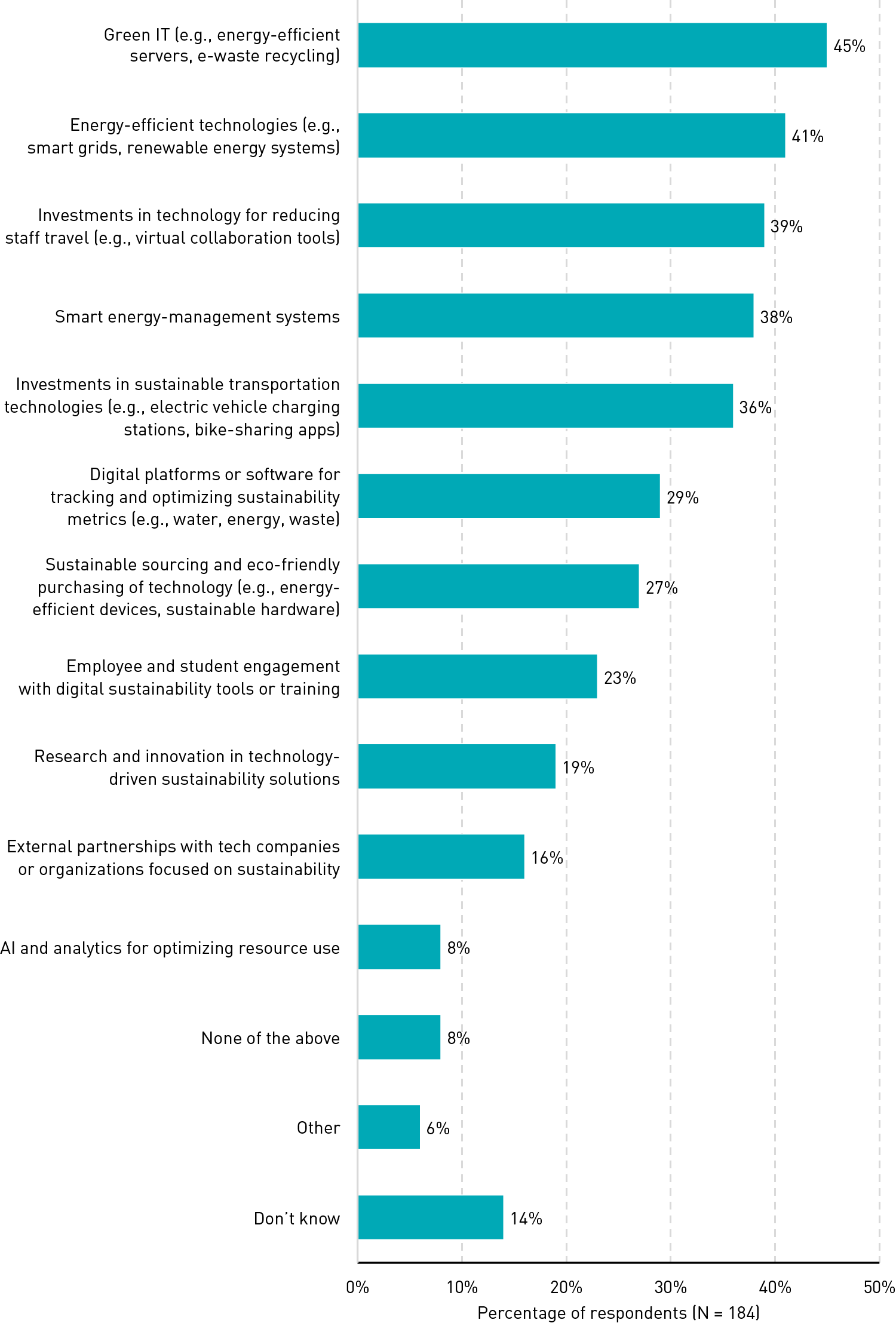
The Data: Resources to Support Sustainable Practice
The primary technology-related challenges in achieving sustainability goals stem from limited resources. Respondents identified a few key technology-related challenges in achieving sustainability goals. Two in five (40%) identified a lack of time or bandwidth to prioritize and implement sustainable technologies as a notable barrier, while the same proportion pointed to the high costs of adopting advanced sustainability technologies (e.g., smart energy systems, AI-based resource management) (see figure 5). About a quarter of respondents (24%) noted that inadequate infrastructure or resources for sustainable operations was a key challenge. As with responses to other questions, though, an appreciable proportion of respondents (31%) said they did not know what the primary technology-related challenges were for their institutions, indicating a possible communication gap between leaders of institutional sustainability efforts and other members of the campus community.
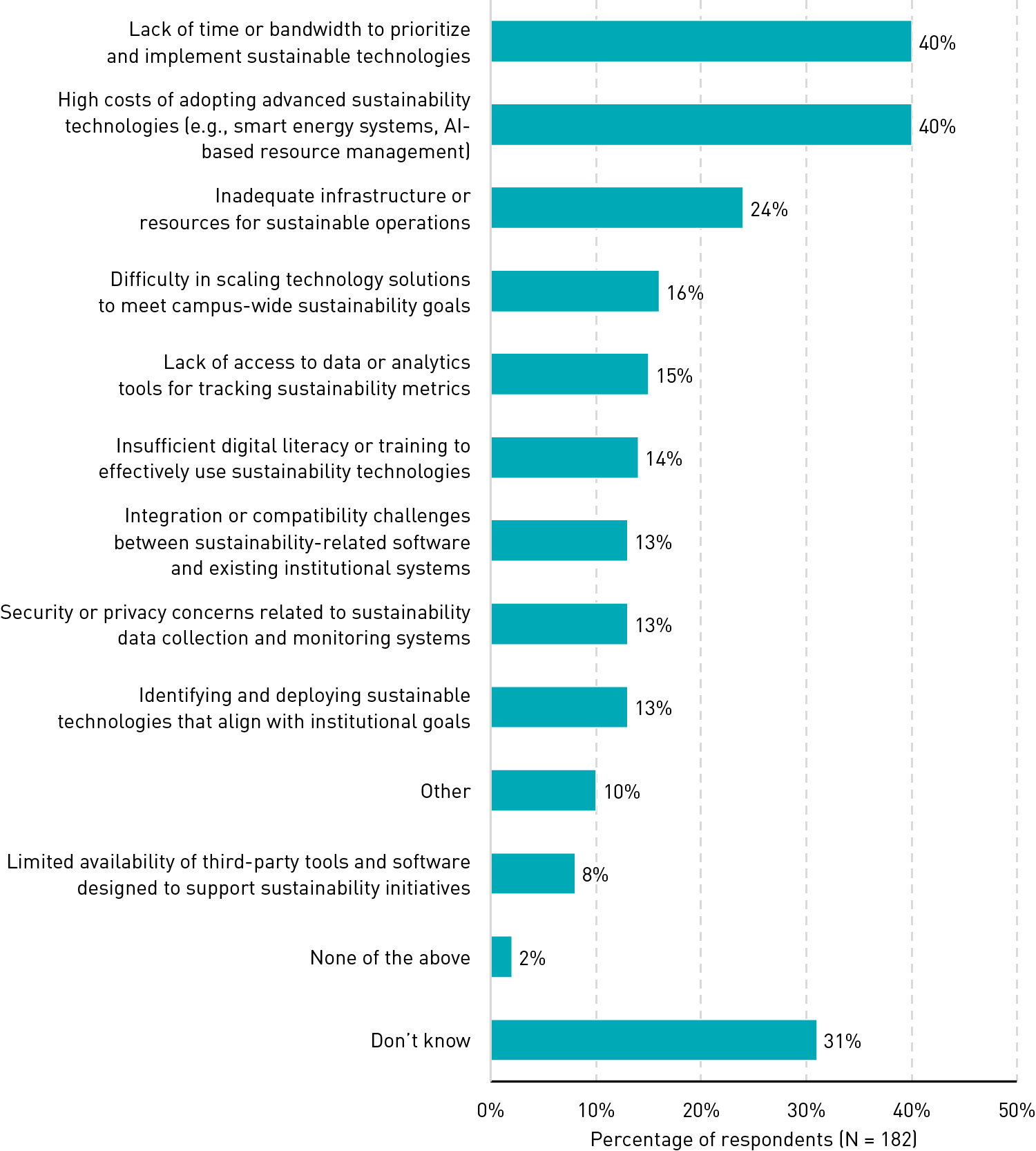
Resources that would be most helpful for advancing sustainable practices include financial and policy support, guidance and infrastructure, and education and awareness. Respondents identified three categories of internal technology resources or initiatives that would be most helpful for advancing sustainable practices at their institution. Respondents noted that two monetary aspects would be beneficial: financial support and incentives for adopting sustainable technologies (41% of respondents), and guidance for sustainable technology purchasing decisions (32%). A second group of initiatives focused on education—29% of respondents identified training and resources for using sustainability-focused technologies as beneficial, and 20% pointed to awareness campaigns focused on technology-driven sustainability solutions. A third set of initiatives concerned models of sustainable technology infrastructure (e.g., green IT solutions, renewable energy systems) (25% of respondents) and policy support for implementing sustainable technologies and innovations (20%).
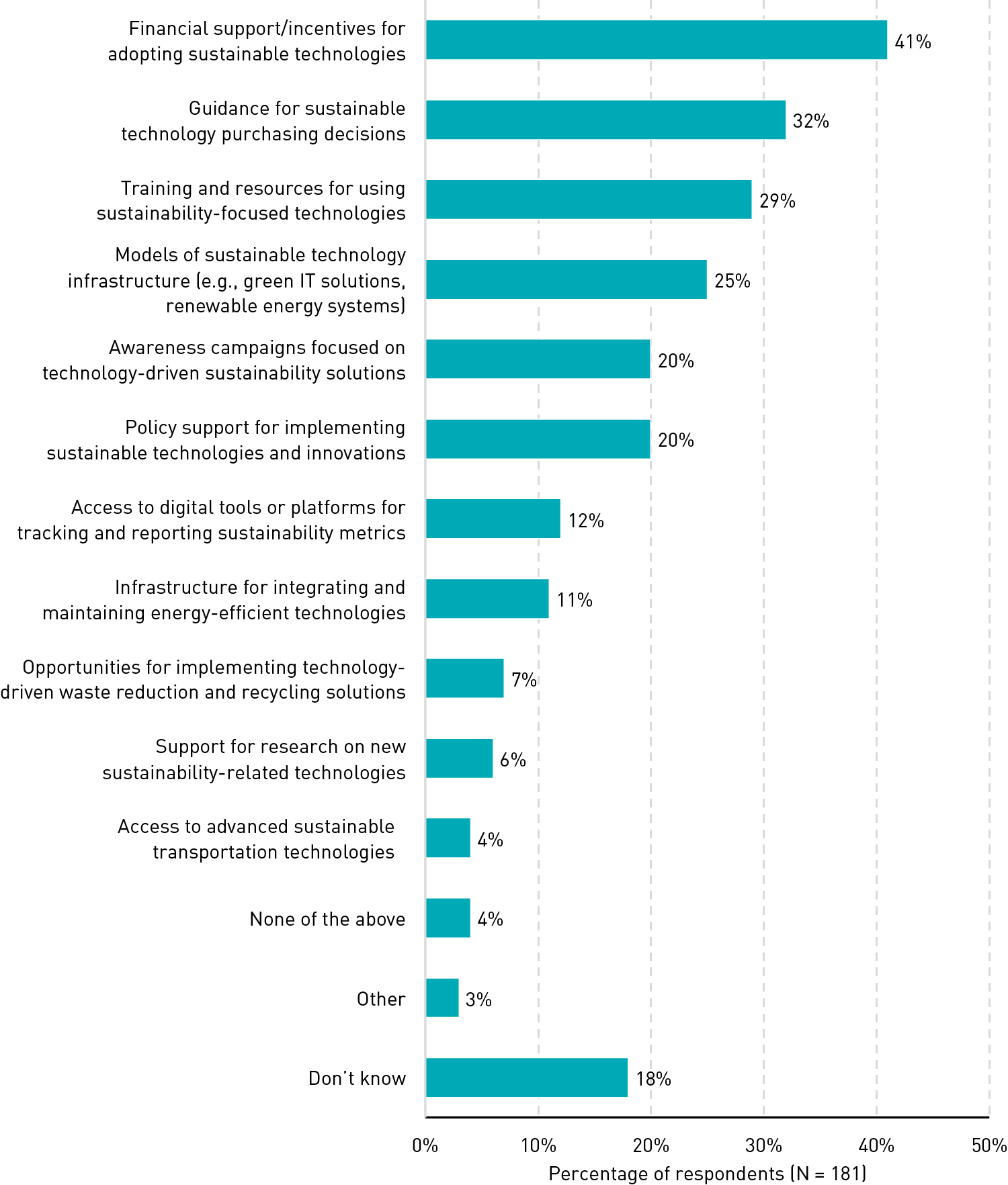
Common Challenges
Many respondents are unaware of institutional goals, challenges, and needed resources surrounding sustainability. A notable percentage of respondents reported that they did not know about their institution's goals, challenges, and practices around sustainability. Although one would expect that some in the campus community do not have deep insight into technology purchasing decisions or the challenges of balancing sustainability with scaling AI, we found sizable numbers of respondents who are uncertain whether their institution has established sustainability goals and what concrete steps it is taking to pursue them. Surprisingly, this was even true for respondents in director or manager roles, as 23% of these respondents indicated that they were unaware of institutional sustainability goals. Increasing awareness about sustainability goals and practices seems like an important way to ensure broader engagement, informed decision-making, and more effective implementation of sustainability initiatives. For one respondent, a search turned up the institution's sustainability goals, but this person noted that "my instinct (and experience) tells me that sustainability is only really sustainable if there is awareness and buy-in broadly across an organization, not just amongst those who craft the policy or are otherwise directly and professional concerned."
Overall, institutions are not yet managing tensions between sustainability goals and scaling AI. Although institutions appear to be investing in technology solutions that support sustainability goals, there is room for growth in terms of managing tensions between sustainability goals and scaling AI, which requires notoriously large amounts of energy. As institutions expand their investment in AI technologies, scaling these systems will likely lead to higher energy consumption and resource depletion, which would undermine sustainability goals. However, a plurality of respondents (30%) noted that despite institutional awareness of these tensions, their institution was not yet taking any specific action to mitigate them (see figure 7). Meanwhile, 23% of respondents said their institution was not aware of the tensions, and 26% said they did not know. Just 8% of respondents said their institution was actively working to manage these tensions, and 10% said their institution was taking limited steps to address them. While it may be too early for most institutions to have clear solutions for these developing priorities, the rapid growth of generative AI is likely to require increased attention as sustainability efforts evolve in the coming years.
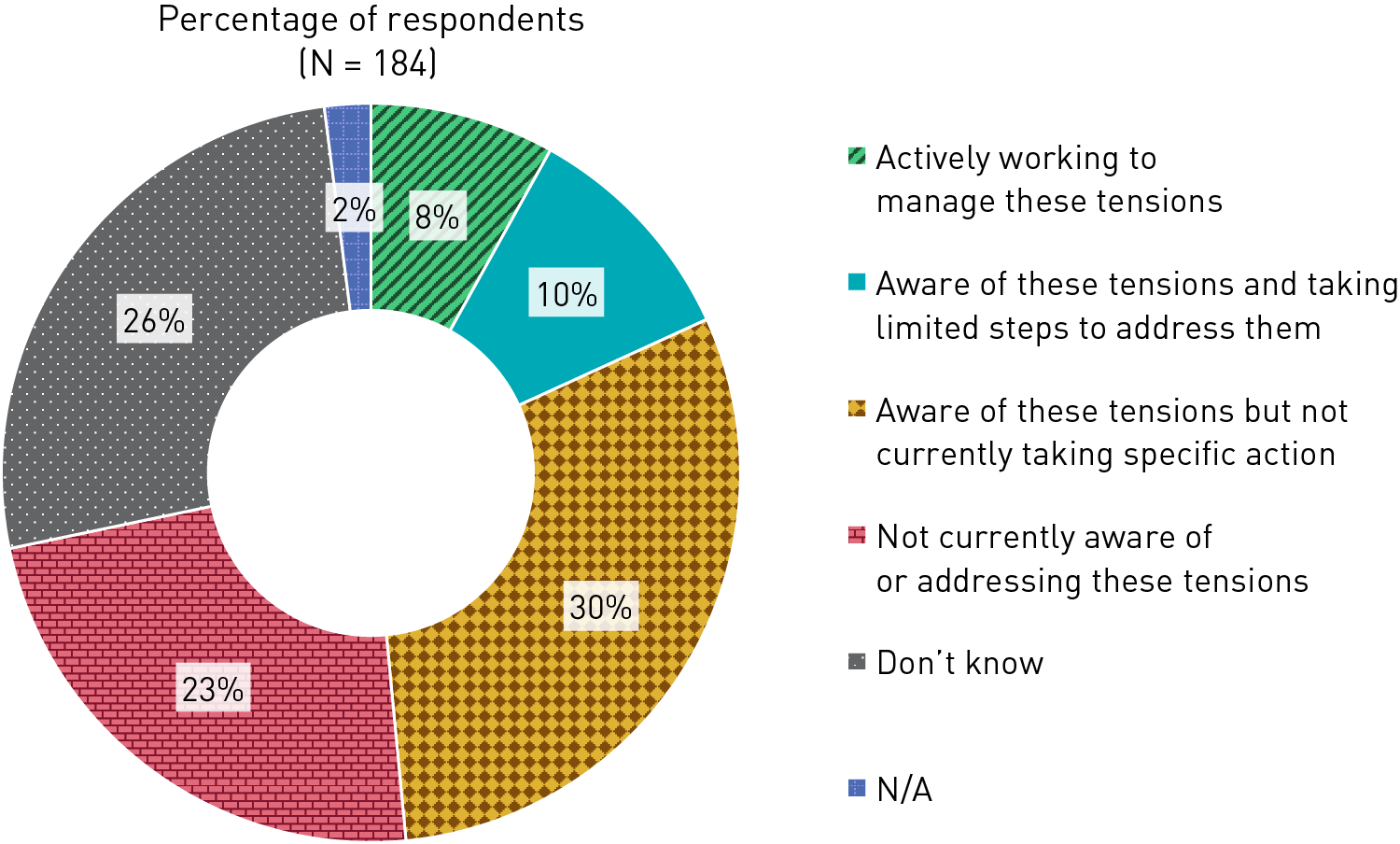
Promising Practices
Institutions are investing in sustainability, but it is still a developing priority. Respondents indicated that many institutions are still developing their goals and practices around sustainability but are nonetheless taking some steps to invest in energy-efficient technologies, green IT, and technologies that reduce staff travel and support sustainable transportation. Continuing to invest in technology-driven sustainable practices is crucial for boosting both short-term institutional efficiencies and long-term resilience.
Student and campus community engagement is a key driver of institutional commitments to sustainability. While several factors played a key role in driving institutional commitments to sustainability, a plurality of respondents (42%) emphasized the importance of student and campus community demand and engagement. As higher education continues to evolve amid shifting priorities and uncertainty about the future, it is encouraging to remember that student and community engagement makes a significant difference in shaping institutional priorities, driving meaningful change, and fostering a more sustainable and responsive educational environment.
All QuickPoll results can be found on the EDUCAUSE QuickPolls web page. For more information and analysis about higher education IT research and data, please visit the EDUCAUSE Review EDUCAUSE Research Notes topic channel. For information about research standards, including for sponsored research, see the EDUCAUSE Research Policy.
Notes
- QuickPolls are less formal than EDUCAUSE survey research. They gather data in a single day instead of over several weeks and allow timely reporting of current issues. This poll was conducted February 17–18, 2025, consisted of 17 questions, and resulted in 184 responses for analysis. The poll was distributed by EDUCAUSE staff to relevant EDUCAUSE Community Groups rather than via our enterprise survey infrastructure, and we are not able to associate responses with specific institutions. Our sample represents a range of institution types and FTE sizes. Jump back to footnote 1 in the text.
- Percentages throughout have been rounded to the nearest whole number, occasionally resulting in sums just under or over 100%. Jump back to footnote 2 in the text.
Kristen Gay is Researcher at EDUCAUSE.
© 2025 Kristen Gay. The content of this work is licensed under a Creative Commons BY-NC-ND 4.0 International License.
